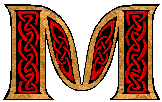German wine glossary
A B C D E F G H I J K L M N O P Q R S T U V W X Y Z
M-L
Common abbreviation for malo-lactic fermentation.
Maceration
The act of soaking grape skins and other solids in their juice for certain time periods prior to fermentation of the juice. Often used for Chardonnay production in order to increase the extraction of Chardonnay flavour (which is otherwise concentrated in the skins rather than in the juice).
Maderization
Oxidation of table wines due to improper (or too long) storage. Maderized wines, both white and red, are recognized by their brown colour, lack of fruitiness and oxidized taste. Maderization gives Madeira wines part of their desirable character; but the same character is undesirable in normal table wines.
Madeleine Angevine (enable pop-ups to see pictures) for a full list of grapes click HERE
(white grape) Also known as Madeline Angevine. Cool region table grape cross-used for Riesling-type white table wine production in the United Kingdom and Germany. It is a cross between Madeleine Royale and Précoce de Malingre. Susceptible to bunch-rots.
Magnum
Oversize bottle, with twice the capacity of a standard 750 ml. wine bottle. The word "magnum" is used for a 1.5 liter bottle of great wine. However, the words "one point five" are used for a bottle of ordinary wine. Do not confuse the two.
Malic acid
A natural organic acid which occurs in ripe grapes in relatively high concentrations. It is the second most abundant organic acid in most wine varieties.
Malo-lactic fermentation
A bacterial fermentation which sometimes occurs in new wines after the primary yeast fermentation. Malo-lactic, or secondary fermentation changes natural malic acid into lactic acid and CO2. The CO2 bubbles off, giving the effect of a new fermentation, which it is.
Manhole
Large opening in the side wall of a wine tank through which spent pomace or lees is removed after the wine is racked (drained) off. Cellar workers can enter through the manhole for tank cleaning.
Mariensteiner (enable pop-ups to see pictures) for a full list of grapes click HERE
(white grape) This is a crossing between Silvaner and Riesling and is a Vinifera variety developed at the Wurtzberg Institute, Germany in 1971, can give quite high must weights but too much acidity in poor years.
Mergel
Heavy Loam
Meristem
Region of active growth in a vine, made up of meristematic cells which divide to form new cells during growth.
Meristematic tissue
The growth tissue of a grape vine, located in the cambium, shoot tips, buds, root tips and flower. Meristematic tissue is composed of thin-walled actively growing cells which form new cells by dividing.
Microclimate
The localized climate in a specific, small area as opposed to the overall climate of the larger, surrounding region. A microclimate can be very small, as to encompass a single vine, or cover a whole vineyard of several acres or more. Microclimates can be caused by slope of the land, soil type and colour, fog, exposure, wind and possibly many other factors.
Mildew (enable pop-ups to see pictures)
Grapevine disease. Can be devastating but is usually controlled by dusting the vines with sulfur or spraying with organic fungicides.
Millerandage is a French term referring to an viticultural problem in whi ch grape bunches contain berries of greatly different size and, most important, different levels of maturity. Its most common cause is too cold or otherwise bad weather during the flowering stage of the vines. The condition causes lower quality in affected wines, which are often French or German.
ch grape bunches contain berries of greatly different size and, most important, different levels of maturity. Its most common cause is too cold or otherwise bad weather during the flowering stage of the vines. The condition causes lower quality in affected wines, which are often French or German.
Mineral ions
Electrically charged forms of minerals, usually occuring in solution in the soil moisture and available for takeup by roots. Some examples used by grape vines are potassium, calcium, phosphate, boron, nitrate, sulfate, iron, manganese and magnesium.
Morio-Muskat (enable pop-ups to see pictures) for a full list of grapes click HERE
(white grape) Developed by Peter Mario at the Geilweilerhof Institute, Germany around 1961 this is a crossing of Silvaner and Riesling. It is not a Muscat but does have the grapey bouquet of a Muscat. There are about 1000ha in production.
Mosel 



German wine region which, along with the Rheingau, produces some of the world's best Riesling (and related) wines. Known for its slate soil without which the region might not be able to grow and ripen grapes at all. It is one of the world's most northerly vineyards. But the best wines are truly superb, having all the finesse and delicacy one could hope for in a white wine.
For further information see Mosel page
Moselle
French for Mosel.
Mosler
Austrian growers name for the Hungarian Furmint grape.
Mostgewicht
Must weight which is the weight of sugar in the grapes at the time of the harvest
Müller-Thurgau (enable pop-ups to see pictures) for a full list of grapes click HERE
Early ripening cross officially developed from Sylvaner and Riesling, but some authorities now contend was actually from two clonal varieties of Riesling. (But some authorities now contend, based on DNA analysis, that it is a Chasselas, not Sylvaner, cross with Riesling) It produces a flowery, yet acidic white wine that bears a modest resemblance to the parent Riesling grapevine. Widely planted in Europe, New Zealand and some parts of England where it is known as Rivaner. The famous plant physiologist Dr. Mueller from Thurgau in Switzerland (in 1882 when he was working at Geisenheim)
Müllerebe (enable pop-ups to see pictures)
Translates as "Millers Grape". Alias name for the Pinot Meunier grape of France.
Must
The sloppy mess that results from crushing fresh grapes (before fermentation). Includes pulp, skins, seeds, juice, bits of stem .
Muskateller (enable pop-ups to see pictures) for a full list of grapes click HERE
(white grape) This is a very old variety with high demands on the climate and the vineyard and found only in a few isolated places in the Kaiserstuhl district the wine is a rarity with a well-balanced bouquet and a pronounced character with sufficient acidity. This grape is also known as Muscat a petit grains or gelber muskateller.
Mute
Sweetening agent for winemaking produced by fortifying fresh juice or by chilling the juice and adding high amounts of SO2. It is used later for sweetening certain wines before bottling.
Wine villages beginning with
click the village name for a list of its einzellagen (individual vineyards)
Back to the Top of wine glossary







